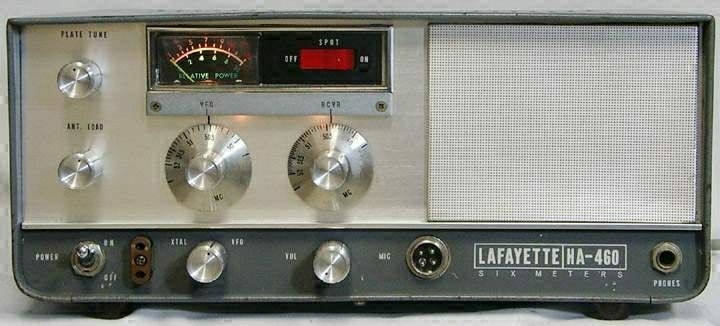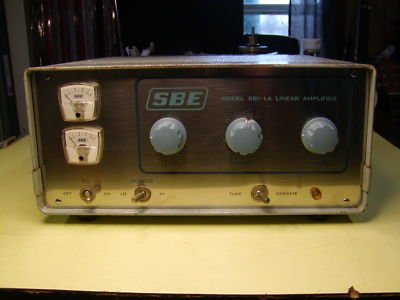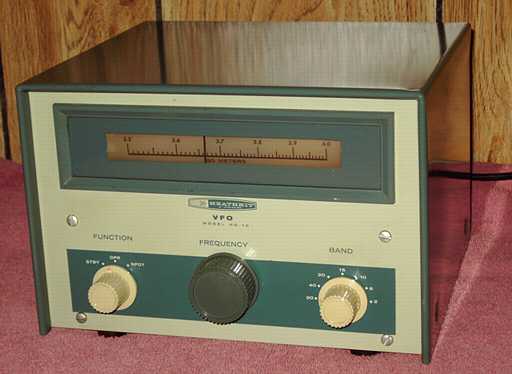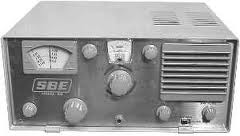By early January of 1971, I was having a ball using my “Hot Water 16”. I had joined several traffic nets, helping the folks at home keep in touch with their loved ones serving in the Vietnam War. It was pretty strange to be a kid of 13 and call a parent of some 19 year old to relay a message saying their son was never dry, but everything was OK under the circumstances. I never quite felt old enough for that task even when the news was happy.
One nice thing about the traffic handling was that it really built up your Morse code skills. Many folks would pass their Novice Class exam, which required the ability to copy 5 words a minute, but never make the leap to 13 words a minute, which was the requirement of the General and Advanced Class licenses. By March of 1971 my code speed was over 20 WPM (according to a W1AW Code Proficiency Test), so that wasn’t an issue. During the summer a friend of mine, John Meadows, WN4SFV and I decided we wanted to shoot for the gold and take our Advanced Class Exam together, skipping over the Technician and General Class license. (Just a historical note: At the time you couldn’t take the Extra Class Exam unless you had a license other than Novice Class for at least two years, I believe. Had that not been the case, then John and I would have surely taken the Extra Exam and passed it on the spot even with the 20 WPM requirement).
So we studied the electrical theory, rules and regulations over the summer. While I don’t have a clear recollection as to exactly when we took the exam, I believe my father drove John and I down to Birmingham sometime in the summer of 1971. In those days everything was done by hand and it took many weeks if not months for the FCC to send you the results of your exam. You either got a new license in the mail or a notice that you needed to take the exam again (after a ‘cooling off’ period). Both of us passed and we we celebrated with a 6-meter AM chat that ran all day and night when we got the results in the mail around December of 1971 (My father had purchased a used Lafayette HA-460, which was a 20 watt 6-meter AM radio). As per usual I used it a lot and he hardly used it at all.

Lafayette HA-460 6 Meter AM Rig
The other nice thing about no longer being a Novice (not to mention new bands and voice modes), was that we could now use a VFO to operate on any frequency we wanted to (as opposed to a fixed crystal frequency). A Heathkit HG-10 VFO was added to my HW-16.
John and I remained close friends until he went off to college (he was a year or two older than I was), and I moved on to New York with my parents.
In addition to the 6-meter AM rig, my father bought a used SBE-33 radio for SSB on the HF bands (80, 40, 20 and 15). His ham shack was in the laundry room and he used a base-loaded vertical antenna. I would go and use the radio there. Eventually I took it over and moved it to my bedroom with all my other ham stuff. About a year later he bought the companion amplifier, which went directly into my room. The amplifier was a nightmare as it use six 6LQ6 tubes in parallel for about 600 watts of input power. More than one set of tubes went up in smoke, their glass caving in from heat and vacuum. It also produced enough power that my resonant on no band inverted-v antenna caused all sorts of issues with my antenna tuner (zapping and sparks were common).
My father and I never did have a combined shack. I always spent far more time on the air with his equipment than he did. His one or two contact a year seemed to satisfy his need for ham radio, while I would fill a logbook each year with contacts.

SBE-SB1 Amplifier
I think it would be fair to say that the teenagers that were involved with ham radio during the early ’70s were the lesser equivalent of the computer geeks today. The differences was that there were fewer of us (ham radio was not nearly as widespread as computing), nor the level of respect. Many a ham would grow into a full fledged computer geek, but prior to the dot com craze, the ladies didn’t see ham geeks as a ticket to financial security like the computer geeks were. In Alabama, in particular, folks were revered for their physical agility on the football field, not their mental agility.
So maybe out of self protection as much as common interest, we tended to flock together with fellow ham friends. One example of this was in the summer of 1972, when a bunch of teens who had gotten to know each other through radio contacts and various traffic nets met at the home of David Barnes, WB4KDI. He was nice enough to convince his parents to host a hoard of ravenous kids they had never met in person in the basement of their house during the Birmingham Hamfest. This was so long ago that I only remember a few things, such as the group being pretty big (maybe a dozen or more), a pool table, and a fantastic breakfast the next morning. (David tells me that it was a ping-pong table, not a pool table — so much for my memory!!)
A memory that is very vivid about that trip was that John Meadows and I drove down together in his Ford Pinto. We had the SBE-33 radio in the car with us and had shoved the DC power supply in the glove compartment to keep it out of the way. As we were screaming down I-65 at about 70 MPH, a paper capacitor in the power supply decide it was time to fail dramatically. There was a loud explosion, the glove box door flew open, and smoke with bits of paper and tin foil filled the car. Somehow John managed to bring us to a safe stop. A replacement capacitor was acquired at the Hamfest, and all was good with the world. Oh yes, and one more thing; Sonny and Cher’s song “The beat goes on” playing on the car radio.










